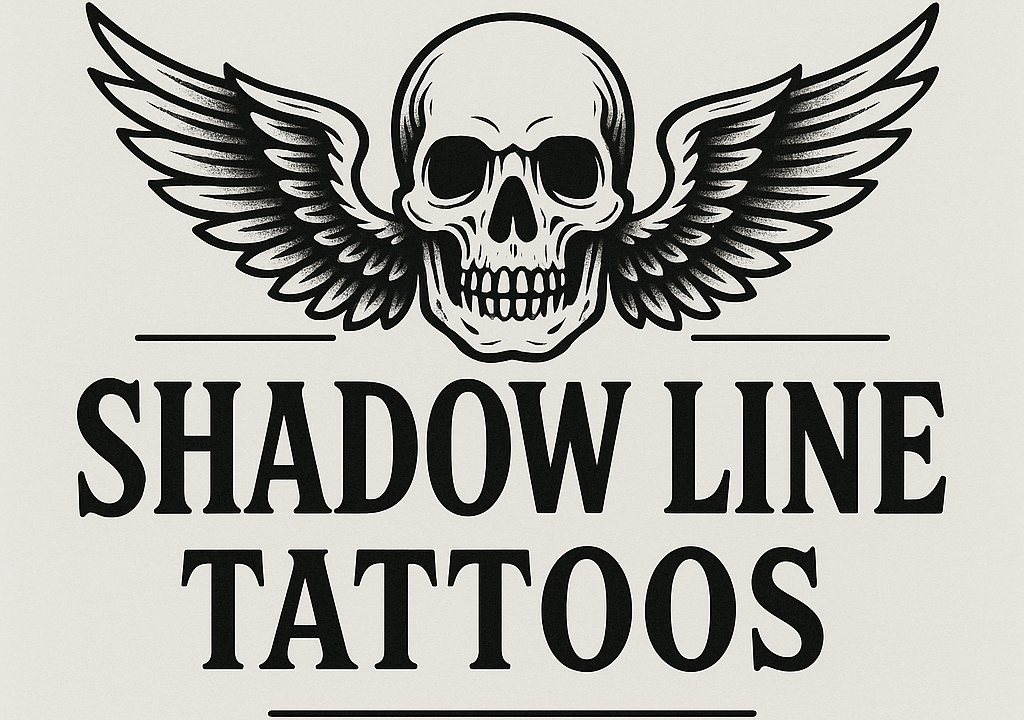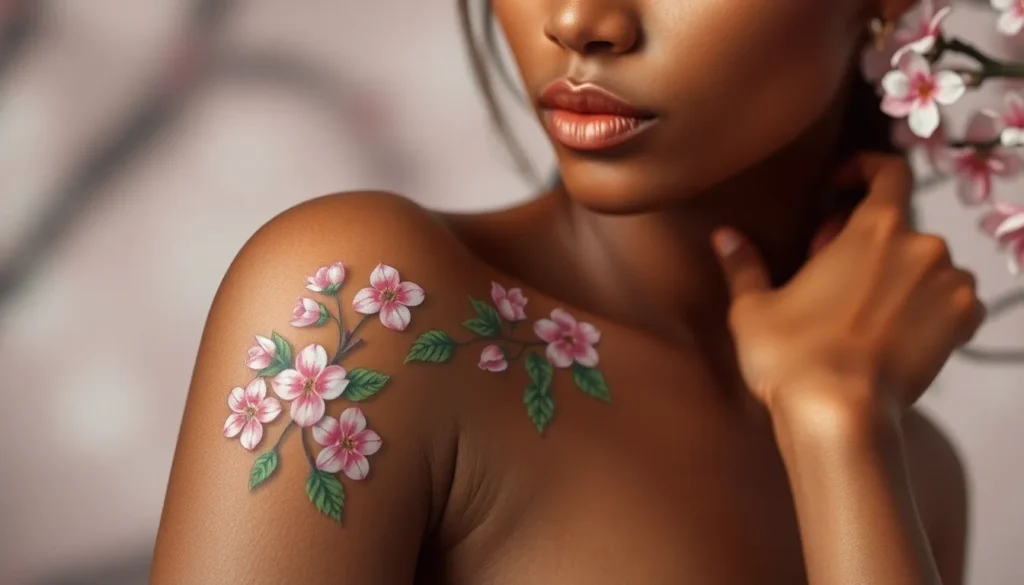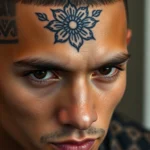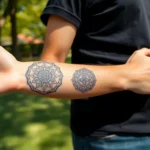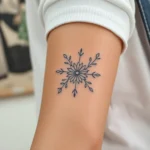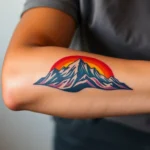Japanese tattoo art has captivated women worldwide with its stunning blend of ancient symbolism and breathtaking artistry. We’ve seen countless clients fall in love with the intricate designs that tell powerful stories through delicate cherry blossoms, graceful koi fish, and mystical dragons. These aren’t just tattoos – they’re wearable masterpieces that connect you to centuries of Japanese culture and tradition.
What makes Japanese tattoos particularly appealing for women is their incredible versatility and feminine elegance. Whether you’re drawn to the soft petals of sakura flowers cascading down your shoulder or the bold statement of a phoenix rising across your back, these designs offer endless possibilities for personal expression.
We’ll explore the most popular Japanese tattoo ideas that perfectly complement feminine aesthetics while honoring the rich cultural heritage behind each symbol. From subtle minimalist designs to elaborate full-sleeve masterpieces, you’ll discover inspiration that speaks to your unique style and story.
Cherry Blossom (Sakura) Tattoo Designs for Feminine Beauty
Sakura tattoos capture the essence of fleeting beauty and renewal that resonates deeply with feminine energy. These designs represent the delicate balance between strength and softness that makes Japanese tattoo art particularly appealing to women.
Delicate Branch Placements on Arms and Shoulders
Branch tattoos flow naturally along the curves of arms and shoulders, creating an organic canvas for sakura artistry. We see these designs work exceptionally well when placed along the shoulder blade, where the natural bone structure enhances the branch’s graceful movement. Single branches with 3-5 blossoms create an elegant statement without overwhelming smaller frame sizes.
Forearm placements allow sakura branches to wrap around the arm’s natural contours, with blossoms cascading from wrist to elbow. Shoulder cap designs position branches to follow the deltoid muscle, creating a feminine silhouette that complements sleeveless clothing. Upper arm placements work beautifully for those seeking more coverage, with branches extending from shoulder to mid-bicep area.
Artists often incorporate subtle shading techniques to give branches realistic bark texture while keeping blossoms soft and ethereal. Branch thickness varies from delicate twigs for minimalist approaches to fuller branches for more dramatic impact.
Watercolor Sakura Techniques for Soft Aesthetics
Watercolor techniques transform traditional sakura tattoos into dreamy, artistic masterpieces that blur the lines between skin and canvas. We recommend this style for women who want their tattoos to resemble painted artwork rather than traditional bold designs. Colors bleed gently into surrounding skin, creating soft edges that mimic actual watercolor paintings.
Pink and magenta hues dominate watercolor sakura designs, with artists layering translucent washes to build depth and dimension. Splashes of purple, coral, and soft yellow often accent the primary pink tones, creating visual interest without overwhelming the design. Background washes in light blue or lavender can represent sky or create atmospheric effects.
Technique execution requires skilled artists who understand color theory and blending methods exact to tattoo application. Proper healing maintains the soft, flowing appearance that makes watercolor sakura tattoos so appealing to feminine sensibilities.
Combining Sakura with Japanese Calligraphy
Calligraphy integration elevates sakura tattoos by adding meaningful text that personalizes the design’s cultural significance. We often see Japanese characters for “beauty,” “strength,” or “love” incorporated alongside cherry blossom elements. Kanji characters work particularly well when positioned to complement the natural flow of sakura branches.
Popular calligraphy choices include words like “Ai” (love), “Bi” (beauty), and “Chikara” (strength), which align with feminine values and personal empowerment. Script placement typically follows the branch direction, creating harmony between visual and textual elements. Vertical arrangements work well along spine placements, while horizontal scripts complement shoulder and forearm designs.
Artists must balance character size with blossom proportions to maintain visual hierarchy and ensure readability. Black ink calligraphy provides classic contrast against pink sakura petals, while matching the calligraphy color to blossom tones creates a more subtle, integrated appearance.
Koi Fish Tattoo Ideas Symbolizing Strength and Perseverance
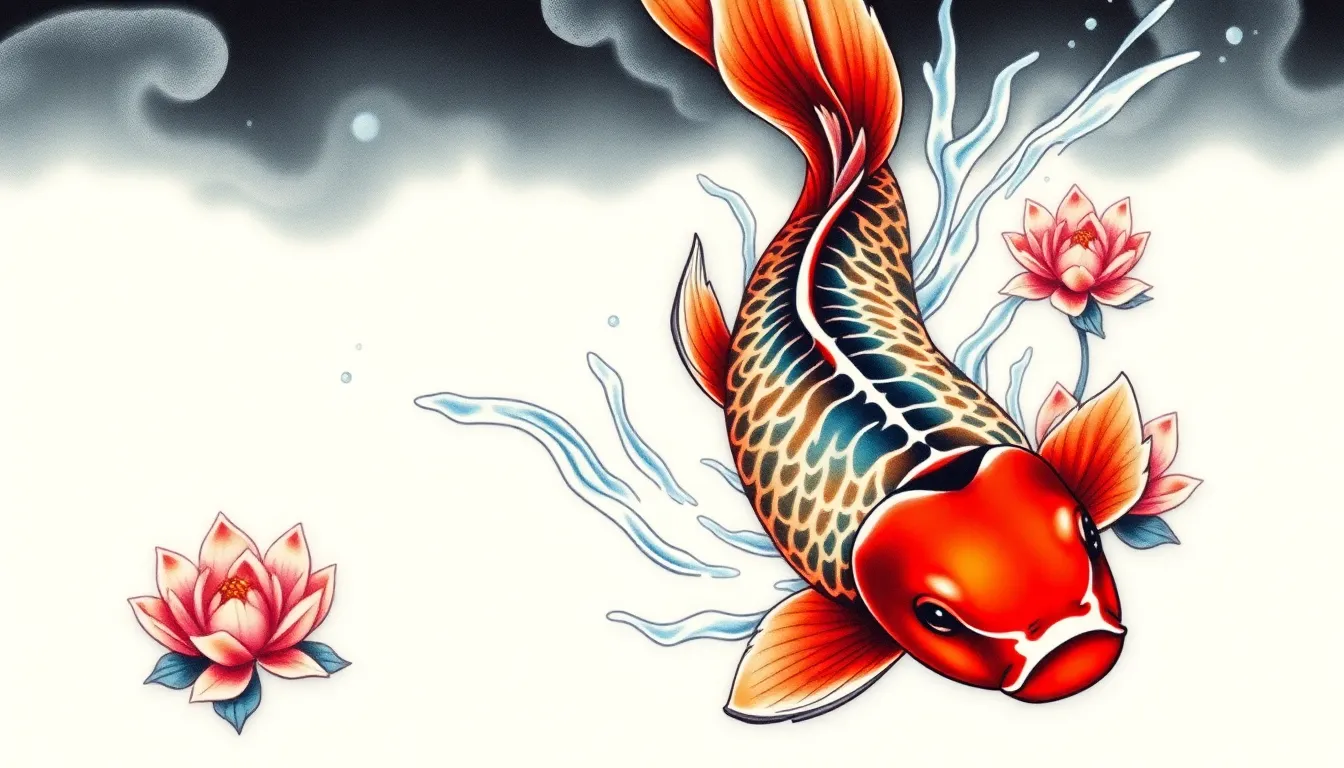
Building on the delicate beauty of sakura designs, koi fish tattoos represent another cornerstone of Japanese feminine artistry that embodies resilience and transformation. These powerful symbols offer women meaningful ways to express their inner strength through vibrant aquatic imagery.
Colorful Koi Swimming Upstream Designs
Vibrant koi swimming against strong currents create stunning tattoo compositions that celebrate courage and determination. Red koi fish traditionally represent love and passion, while blue variations symbolize tranquility and peace in Japanese culture. White koi designs often signify career success and personal achievement, making them perfect choices for women marking important life milestones.
Swimming upstream motifs capture the essence of overcoming obstacles through bold color combinations and ever-changing movement. Artists frequently incorporate flowing water elements using blues and greens to enhance the sense of motion and struggle. Orange and gold accents add warmth to these designs while maintaining the traditional Japanese aesthetic that honors cultural heritage.
Minimalist Black and Gray Koi Representations
Elegant black and gray koi tattoos focus on clean lines and graceful curves that suit smaller body placements perfectly. Shoulder and ankle locations work beautifully for these subtle designs that still convey the powerful symbolism of perseverance. Fine line techniques create sophisticated representations that appeal to women seeking understated Japanese artistry.
Geometric patterns often complement these minimalist approaches by adding contemporary elements to traditional koi imagery. Dotwork shading techniques enhance the three dimensional quality of black and gray designs without overwhelming delicate placement areas. Simple yet meaningful, these tattoos prove that impactful symbolism doesn’t require elaborate color schemes.
Koi Pond Scenes with Lotus Flowers
Serene pond environments combine koi fish with lotus flowers to create comprehensive Japanese garden tattoos that celebrate spiritual growth. Lotus blooms represent enlightenment and rebirth, perfectly complementing the perseverance symbolism of swimming koi. Cherry blossom petals floating on water surfaces add layers of meaning about life’s impermanence and beauty.
Water lily pads and bamboo elements often frame these scenic compositions to create balanced, harmonious designs. Rippling water effects around the koi enhance the peaceful atmosphere while maintaining visual interest throughout the tattoo. These elaborate scenes work exceptionally well on larger canvas areas like the back or thigh, allowing artists to develop rich, detailed environments that tell complete stories of transformation and growth.
Geisha and Maiko Tattoo Concepts for Cultural Elegance
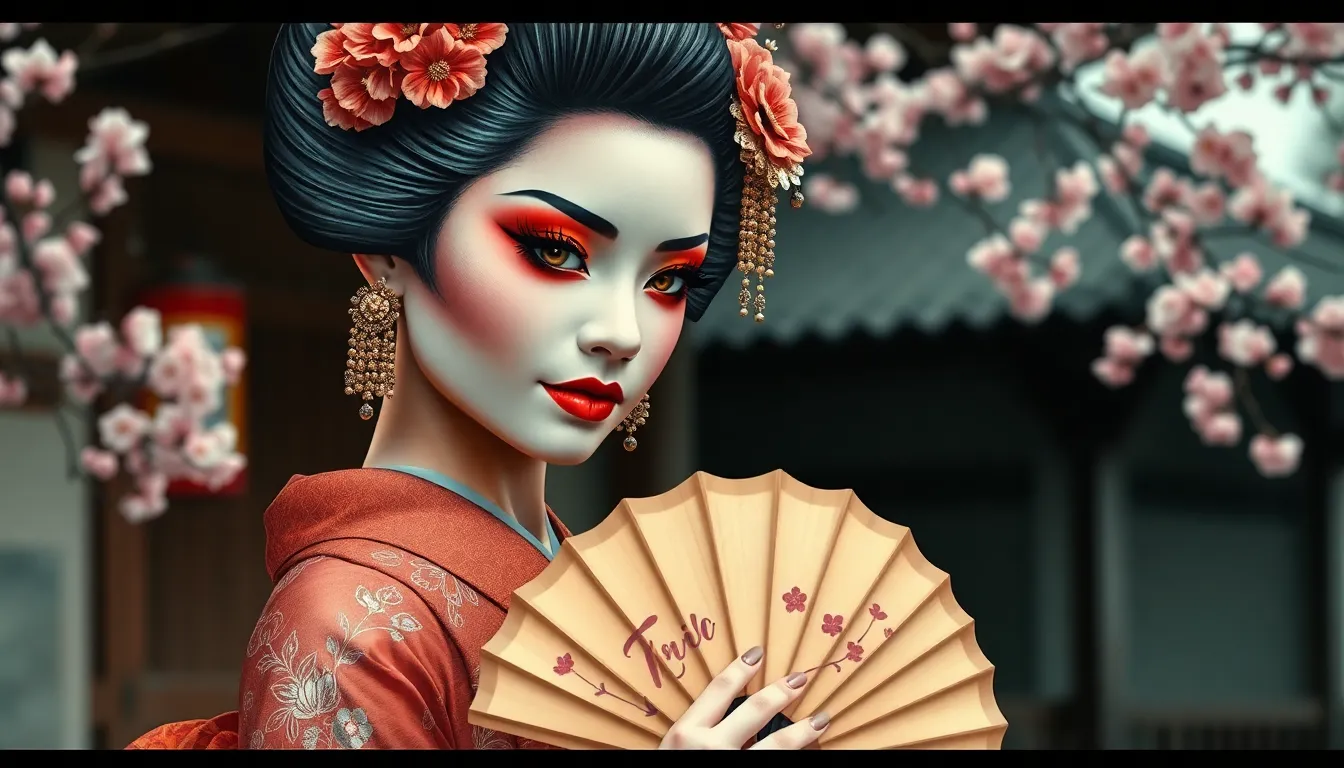
Moving beyond nature-inspired designs, we explore the sophisticated industry of geisha tattoos that embody centuries of Japanese cultural refinement. These elegant figures represent the pinnacle of artistic expression in Japanese tattoo artistry.
Traditional Geisha Portrait Styles
Traditional geisha tattoos showcase these iconic figures in their full ceremonial splendor, emphasizing intricate hairstyles, elaborate makeup, and ornate kimonos. We see these designs deeply rooted in Japanese culture, symbolizing beauty, elegance, and refinement that spans generations. Classical portraits feature geishas with their signature white face paint, crimson lips, and perfectly styled hair adorned with decorative pins and flowers.
Artists often depict geishas performing traditional arts like tea ceremonies, classical music, or graceful dance movements. These detailed compositions require skilled tattooing techniques to capture the delicate features and flowing fabric textures. Full-sleeve designs frequently incorporate surrounding elements like cherry blossoms, temple architecture, or traditional Japanese patterns to create comprehensive cultural narratives.
Placement options for traditional geisha portraits work exceptionally well on larger canvas areas like the back, thigh, or upper arm. We recommend these locations to accommodate the intricate details that make traditional geisha tattoos truly captivating masterpieces.
Modern Interpretations of Geisha Imagery
Modern geisha tattoos blend traditional designs with contemporary artistry, creating fusion pieces that honor cultural heritage while embracing personal expression. Contemporary artists reimagine classic geisha imagery through innovative techniques, vibrant color palettes, and unique stylistic approaches that give each design its own narrative voice.
Neo-traditional styles incorporate bold outlines, saturated colors, and exaggerated features while maintaining the essential elegance of geisha imagery. Watercolor techniques transform geisha portraits into flowing, artistic masterpieces with soft color bleeding and abstract background elements. Geometric patterns integrated with geisha figures create striking modern compositions that appeal to women seeking unconventional cultural tattoos.
Mixed media approaches combine realistic portraiture with illustrative elements, allowing for creative interpretations that reflect individual personality. These contemporary designs often feature simplified color schemes, focusing on black and gray with selective color highlights for dramatic impact.
Geisha Face Masks and Fan Accessories
Incorporating traditional accessories like masks and fans into geisha tattoos adds layers of cultural significance and visual complexity to these sophisticated designs. Masks symbolize mystery, elegance, and the theatrical nature of geisha performance arts, while fans represent subtlety, refinement, and the graceful gestures central to geisha traditions.
Handheld fans (sensu) create beautiful compositional elements, often depicted partially covering the geisha’s face or extended in elegant poses. We see ornate fan designs featuring intricate patterns, floral motifs, or calligraphy that complement the overall tattoo aesthetic. Theatrical masks (men-yoroi) add dramatic flair, representing different emotions or characters from traditional Japanese theater.
Decorative hair accessories like kanzashi (ornamental hairpins) enhance the authentic feel of geisha tattoos. These delicate elements include seasonal flowers, butterflies, or geometric shapes that reflect traditional Japanese craftsmanship. Combining multiple accessories creates rich, detailed compositions that showcase the artist’s technical skill while honoring the cultural depth of geisha imagery.
Maiko tattoo concepts offer fresh perspectives on traditional geisha themes, focusing on the youthful energy and transformation journey of apprentice geishas. These designs emphasize growth, learning, and the cultural passage from student to master, making them particularly meaningful for women embracing personal transformation.
Japanese Dragon Tattoo Variations for Powerful Femininity

Dragons in Japanese tattooing transcend traditional masculine imagery to embrace feminine strength and grace. These magnificent creatures offer women powerful symbols of protection and inner resilience.
Serpentine Dragons Wrapping Around Limbs
Serpentine dragons create stunning visual effects when they coil gracefully around arms, legs, or torso areas. Artists design these flowing creatures to follow the natural curves of feminine anatomy, emphasizing movement and fluidity. Placement on the forearm allows the dragon to wrap from wrist to elbow, creating an elegant bracelet effect that shifts and moves with arm gestures.
Thigh placements offer dramatic impact as the dragon spirals around the leg, often incorporating floral elements like peonies or lotus blossoms. We see these designs symbolizing protection and strength, with the dragon acting as a guardian wrapped around the wearer’s body. Color variations range from traditional black and gray to vibrant reds and golds, allowing personal expression while maintaining cultural authenticity.
Dragon and Cloud Combinations
Dragon and cloud combinations represent the harmony between earthly power and celestial wisdom. These designs feature dragons emerging from or dancing through swirling cloud formations, creating ever-changing compositions that symbolize balance and tranquility. Artists often position clouds as background elements that frame the dragon, adding depth and movement to the overall design.
Traditional Japanese cloud patterns called “kumo” complement dragon imagery through their flowing, organic shapes. We recommend shoulder blade placements for these designs, as the broad canvas allows for proper cloud formation development. Colors typically include soft grays and whites for clouds contrasted against bold dragon hues, creating visual interest through tonal variation.
Smaller versions work beautifully on the ribcage, where the natural curve of the body enhances the flowing cloud movement. These tattoos often incorporate wind bars or stylized air currents, reinforcing the connection between dragon power and atmospheric elements.
Small-Scale Dragon Accents for Subtle Impact
Small-scale dragon tattoos deliver powerful symbolism without overwhelming the body’s natural proportions. Wrist placements feature miniature dragons that wrap around the joint, creating delicate bracelet effects perfect for professional environments. Behind-the-ear locations offer intimate dragon imagery that remains hidden until revealed through hairstyle changes.
Ankle dragons provide subtle accent pieces that complement other Japanese elements like cherry blossoms or bamboo shoots. We find these smaller designs particularly effective when executed in fine line work, emphasizing detail over size for maximum impact. Single needle techniques create intricate scales and flowing whiskers that maintain clarity even at reduced dimensions.
Finger dragons represent commitment to the art form, as these highly visible locations require careful consideration and skilled execution. These tiny guardians often incorporate minimalist cloud wisps or flame elements, proving that powerful symbolism doesn’t require large canvas areas to make meaningful statements.
Lotus Flower Tattoo Designs Representing Purity and Rebirth
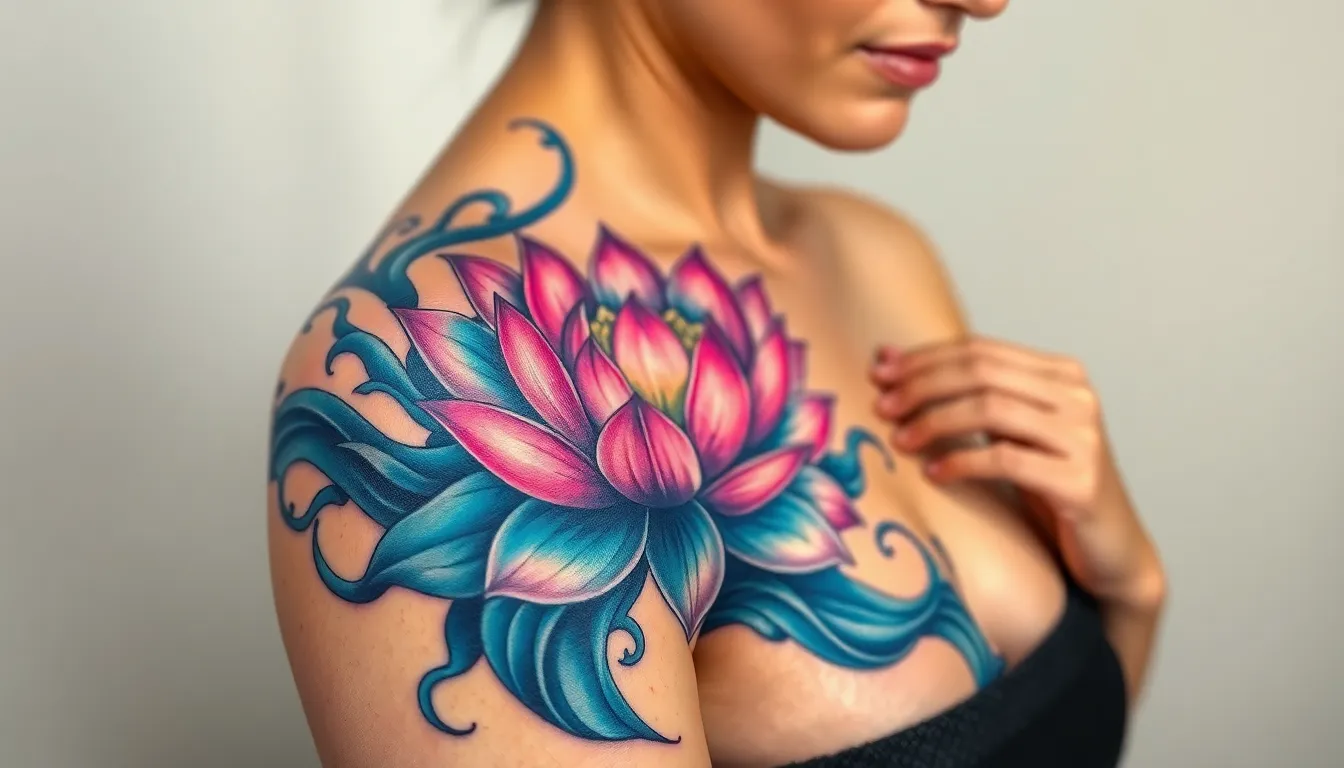
Lotus flowers offer a meaningful departure from traditional Japanese motifs while maintaining the cultural aesthetic that makes these tattoos so captivating. We find that incorporating lotus designs with Japanese-inspired elements creates a unique fusion that speaks to spiritual transformation and personal growth.
Full Bloom Lotus with Water Elements
Full bloom lotus tattoos reach their artistic peak when combined with traditional Japanese water elements like flowing waves and gentle currents. Creating a harmonious design, these water features complement the lotus’s natural habitat while adding movement and depth to the overall composition.
Wave patterns inspired by hokusai-style artwork transform simple lotus tattoos into ever-changing pieces that seem to come alive on the skin. Swirling water motifs beneath the fully opened petals create a sense of the flower floating gracefully on a tranquil pond’s surface.
Placement options for these comprehensive designs work best on larger areas like the thigh, back, or upper arm where the water elements have room to flow naturally. We recommend incorporating subtle color gradients that transition from deep blues in the water to soft pinks and whites in the lotus petals.
Lotus Bud and Stem Compositions
Lotus bud designs capture the essence of potential and emerging beauty, making them particularly meaningful for women embarking on new life chapters. Japanese-style stems and leaves enhance these compositions by adding cultural relevance through traditional artistic techniques.
Elongated stems with graceful curves mirror the aesthetic principles found in Japanese brush painting, creating tattoos that feel both organic and artistically refined. Detailed leaf structures provide opportunities for intricate shading work that showcases the tattoo artist’s skill.
Vertical placements along the forearm, calf, or spine work exceptionally well for these elongated designs. We often see these tattoos enhanced with small water droplets or morning dew effects that add realism and symbolic meaning related to renewal and fresh beginnings.
Geometric Lotus Patterns with Japanese Influence
Geometric lotus patterns offer a contemporary twist on traditional symbolism by incorporating Japanese-inspired geometric elements like hexagons, triangles, and sacred geometry principles. Modern interpretations blend clean lines with organic lotus forms, creating striking visual contrasts.
Traditional Japanese patterns like seigaiha (wave patterns) and asanoha (hemp leaf patterns) work beautifully as background elements behind stylized lotus silhouettes. These geometric foundations provide structure while the lotus maintains its spiritual significance.
Mandala-style arrangements featuring lotus petals create circular compositions that work perfectly for shoulder, back, or chest placements. We find that black ink with selective color accents in the lotus center creates bold, modern pieces that honor both traditional symbolism and contemporary aesthetic preferences.
Crane Tattoo Ideas Symbolizing Longevity and Good Fortune
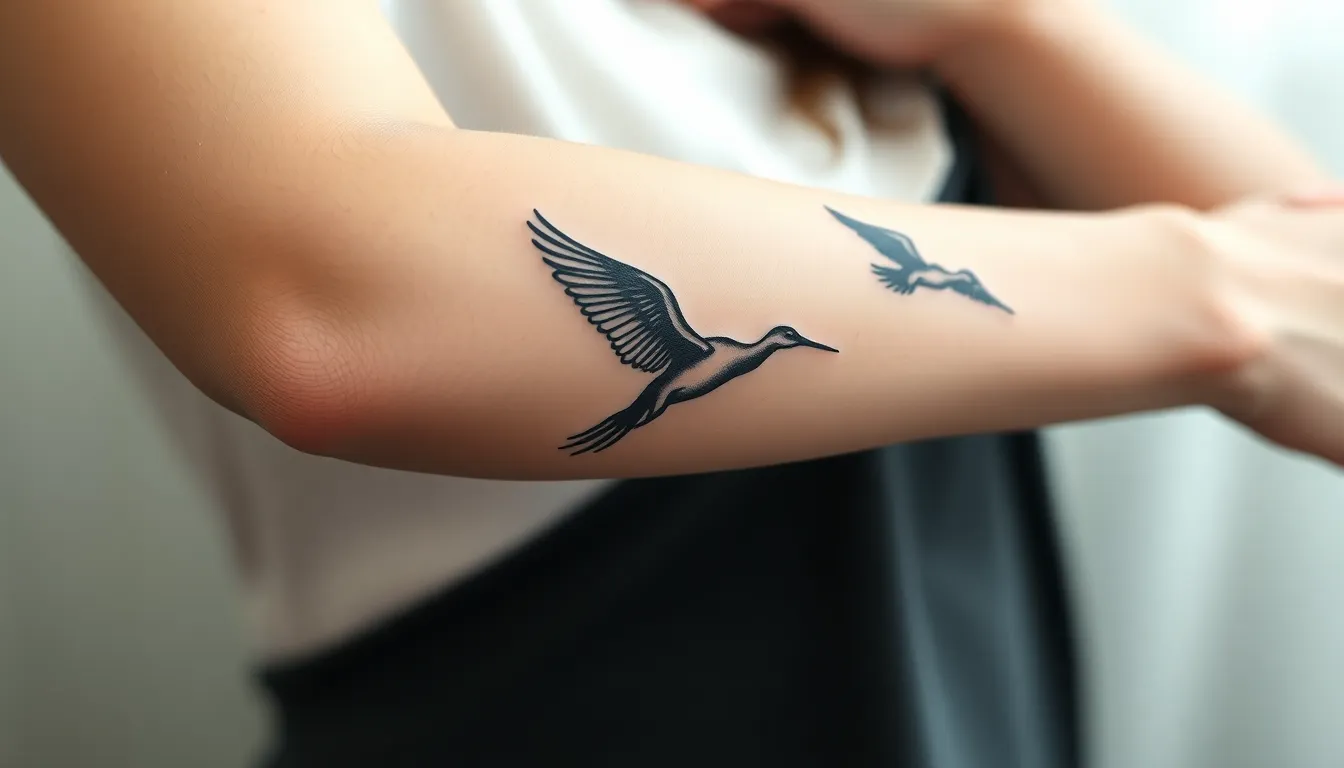
Cranes hold profound significance in Japanese culture, representing longevity, fidelity, and good fortune that resonates deeply with women seeking meaningful body art. These majestic birds offer versatile design possibilities that blend traditional symbolism with contemporary tattoo artistry.
Flying Crane Silhouettes
Minimalist elegance defines flying crane silhouettes, capturing the bird’s graceful movement through simplified forms and clean lines. These designs focus on the essential shape of cranes in flight, creating powerful visual impact without intricate details. Placement options include the forearm, shoulder blade, or ribcage where the elongated silhouette complements natural body curves.
Ever-changing movement comes alive through carefully positioned wings and outstretched necks that suggest soaring through clouds or ascending toward celestial realms. Single crane silhouettes work beautifully as standalone pieces, while multiple birds create flowing compositions that wrap around limbs or cascade down the spine. Black ink provides striking contrast against skin, though subtle gray shading can add depth and dimension to wing formations.
Versatile sizing makes crane silhouettes adaptable to various body locations, from delicate wrist placements to larger back pieces that showcase the bird’s full wingspan. These designs particularly appeal to women who appreciate understated elegance and symbolic meaning without overwhelming visual complexity.
Origami Crane Interpretations
Paper fold artistry transforms traditional crane imagery into geometric interpretations that honor both Japanese origami traditions and modern tattoo aesthetics. These designs incorporate visible fold lines and angular segments that mimic the paper folding process, creating unique visual texture through strategic line work. Color gradients can simulate the appearance of colored origami paper, while fine line details emphasize the mathematical precision of each fold.
Cultural fusion emerges when origami cranes combine with traditional Japanese elements like cherry blossoms, flowing water, or mountainous landscapes. Cherry blossom petals might appear to flutter around geometric crane forms, symbolizing the harmony between structured art and natural beauty. Bamboo stems or wave patterns can frame origami crane designs, creating comprehensive compositions that celebrate multiple aspects of Japanese culture.
Symbolic multiplication occurs when several origami cranes appear together, referencing the traditional practice of folding 1,000 cranes for good luck and healing. These designs often feature cranes in various stages of completion, from flat paper squares to fully formed birds, representing personal transformation and goal achievement.
Crane and Moon Combinations
Celestial harmony defines designs that pair graceful cranes with lunar imagery, creating compositions that emphasize balance between earthly creatures and heavenly bodies. Full moons provide dramatic backdrops for crane silhouettes, while crescent moons can cradle flying birds or nest among their outstretched wings. These combinations symbolize the cyclical nature of life and the eternal connection between earth and sky.
Nighttime serenity emerges through careful shading and contrast that suggests moonlit scenes where cranes glide through darkened skies. Silver and gray tones can simulate moonlight reflecting off crane feathers, while deep blues or purples create atmospheric backgrounds that enhance the mystical quality of these nocturnal compositions. Stars scattered around the moon and crane elements add layers of celestial symbolism.
Placement considerations for crane and moon designs typically require larger canvas areas like the upper back, thigh, or full sleeve to accommodate both elements without compromising visual impact. The moon’s circular form provides excellent focal point opportunities, while crane positioning can create ever-changing movement that flows with body contours and enhances the overall composition’s visual narrative.
Japanese Wave (Hokusai Style) Tattoo Concepts
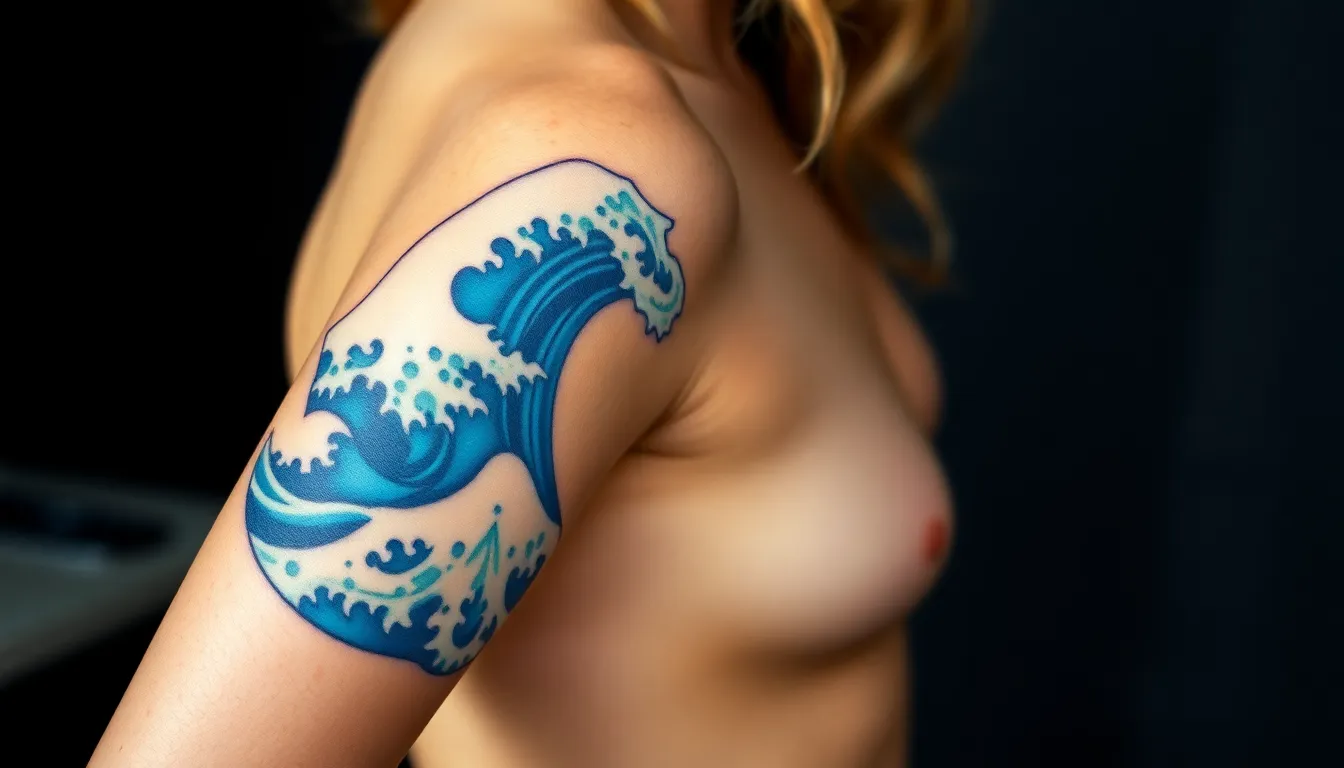
Moving from the grace of traditional cranes to the ever-changing power of ocean waves, we explore the captivating industry of Hokusai inspired wave tattoos. These designs draw from Katsushika Hokusai’s legendary “The Great Wave off Kanagawa,” transforming ancient Japanese artistry into stunning body art that represents strength and resilience.
Great Wave Reproductions and Adaptations
Great wave reproductions capture the iconic blue and white swirling motifs that made Hokusai’s masterpiece legendary. Artists adapt these classical designs to fit various body parts including arms, backs, and legs, using strategic shading techniques to create depth and movement that mirrors the original’s dramatic impact. We can personalize these reproductions by incorporating meaningful symbols or motifs that reflect our individual stories while maintaining the wave’s powerful essence.
Artistic interpretations allow us to scale the design appropriately for different body areas without losing the wave’s distinctive character. The flowing lines and curved elements translate beautifully whether we choose a full back piece or a smaller shoulder design. These adaptations maintain the spiritual connection to the ocean’s power while creating unique artistic expressions that honor the original masterpiece.
Flowing Wave Patterns for Body Curves
Flowing wave patterns excel at following natural body contours, creating seamless designs that enhance our anatomy’s inherent beauty. These tattoos work exceptionally well as sleeves, wrapping around arms with fluid grace, or as backpieces that flow across shoulder blades and spine curves. The wave’s organic movement naturally complements feminine silhouettes, creating harmonious compositions that appear to dance across the skin.
Customization becomes essential when designing wave patterns for exact body areas, ensuring the design enhances rather than fights against natural curves. Artists can adjust wave heights, spacing, and directional flow to create pieces that look purposefully designed for each individual placement. The result transforms static imagery into ever-changing art that moves with our bodies, creating an ever changing visual experience.
Waves with Marine Life Integration
Waves paired with marine life create rich symbolic narratives that celebrate both ocean power and aquatic wisdom. Koi fish swimming through crashing waves represent perseverance and strength in adversity, showing how we overcome life’s challenges with grace and determination. This combination draws from traditional Japanese beliefs about koi’s ability to swim upstream against powerful currents, symbolizing our own resilience.
Other marine elements like turtles add layers of meaning related to longevity and good fortune when incorporated with wave designs. Octopuses swimming through wave patterns bring wisdom and adaptability symbolism, while sea dragons emerging from waves create mythical compositions that blend reality with legend. These integrated designs tell complete stories about our relationship with water’s groundbreaking power and the creatures that thrive within its depths.
Bamboo Tattoo Designs for Flexibility and Resilience
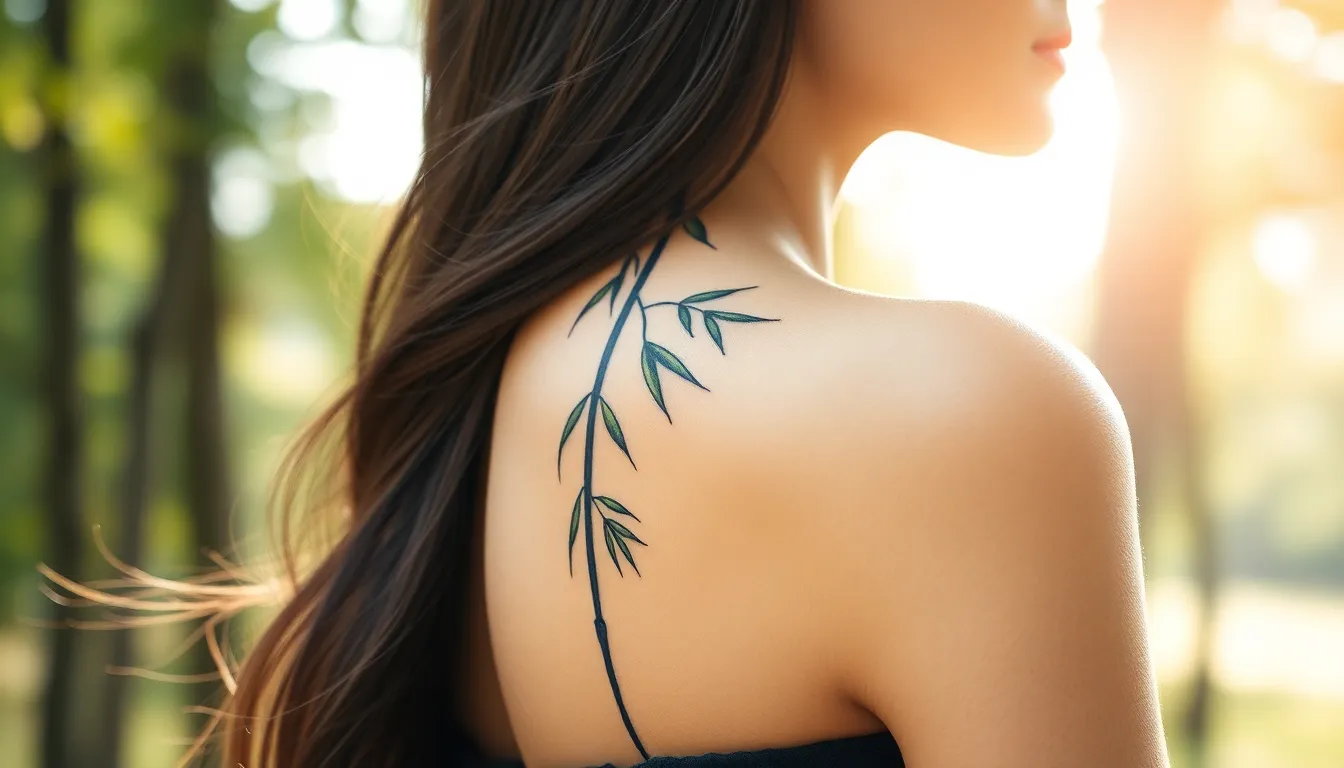
Bamboo holds profound significance in Japanese culture, representing strength that bends without breaking—a powerful metaphor for handling life’s challenges. These elegant designs resonate deeply with women seeking tattoos that embody inner resilience while maintaining graceful femininity.
Vertical Bamboo Stalks Along the Spine
Spine placements create one of the most visually striking options for bamboo tattoos, with vertical stalks following your body’s natural lines. This positioning emphasizes the elongated, graceful nature of bamboo while creating a dramatic silhouette that flows with your movement.
Each bamboo segment along the spine can represent different stages of personal growth or milestones you’ve overcome. Artists typically render these designs with fluid, ever-changing lines that capture bamboo’s inherent flexibility and strength. The vertical arrangement allows for both minimalist interpretations with clean, simple stalks or more detailed versions featuring intricate node patterns and delicate leaf clusters.
Women often choose this placement because it creates an elegant focal point while remaining easily concealed when desired. The spine’s natural curve complements bamboo’s organic form, resulting in a harmonious design that celebrates both your body’s architecture and the plant’s symbolic meaning.
Bamboo Grove Landscapes
Grove designs offer immersive interpretations that transform your skin into a tranquil bamboo forest scene. These comprehensive tattoos typically feature clusters of bamboo stalks at varying heights, creating depth and visual interest through layered compositions.
Artists create these landscapes to wrap around limbs or span across larger areas like the back or thigh, establishing a sense of movement and serenity. The grove motif incorporates multiple bamboo varieties, from thick stalks to delicate shoots, often enhanced with scattered leaves that seem to drift in an invisible breeze.
These designs work particularly well for women who want tattoos that tell complete stories rather than focusing on single elements. Grove landscapes can include subtle details like morning mist effects or dappled light filtering through the bamboo canopy, creating meditative pieces that evoke the peaceful atmosphere of actual bamboo forests.
Minimalist Bamboo Shoots and Leaves
Subtle approaches to bamboo tattoos focus on individual shoots and single leaves, perfect for women preferring discreet yet meaningful body art. These clean, modern designs typically feature simple lines and minimal shading while retaining all the symbolic power of larger pieces.
Single bamboo shoots work beautifully on smaller areas like wrists, ankles, or behind the ears, where their delicate proportions complement the body’s natural curves. Artists often emphasize the shoot’s growth nodes and emerging leaves through precise line work that captures bamboo’s essential characteristics without overwhelming detail.
Individual leaf designs offer even more subtlety while maintaining cultural significance and natural beauty. These pieces can stand alone or work as part of larger compositions, allowing you to build your bamboo-themed tattoo collection gradually. The minimalist approach appeals to women seeking tattoos that integrate seamlessly into professional environments while expressing personal values of adaptability and inner strength.
Japanese Calligraphy and Symbol Tattoo Options
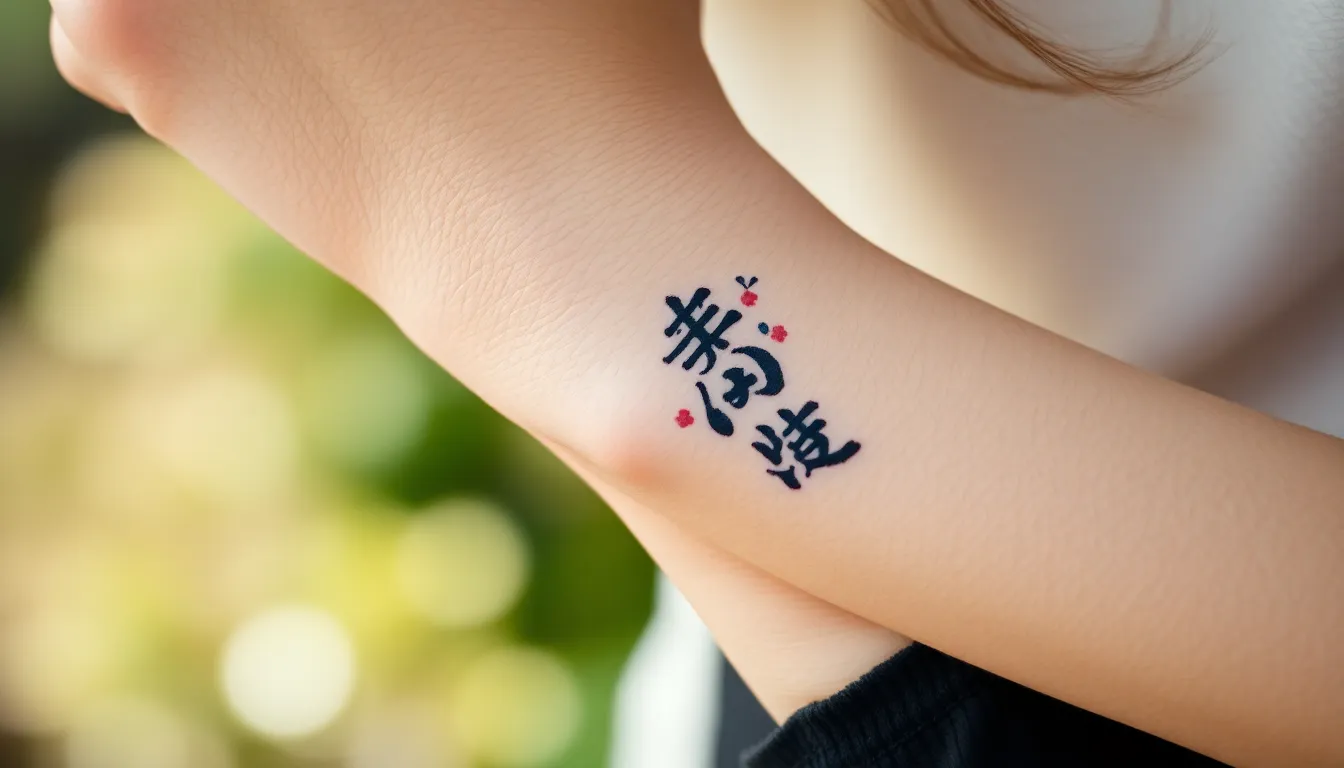
Building on the rich artistic traditions we’ve explored, Japanese calligraphy and symbolic elements offer women sophisticated ways to express personal meaning through tattoo art. These designs combine visual beauty with deep cultural significance, creating meaningful body art that resonates on multiple levels.
Meaningful Japanese Words and Phrases
Akatsuki represents dawn or sunrise, making it perfect for women embracing new beginnings or groundbreaking life phases. This elegant kanji symbolizes hope and fresh starts, often chosen by those marking important personal milestones.
Kokoro translates to heart but encompasses much more than the English equivalent. This profound character represents emotions, spirit, and the essence of one’s inner self, making it ideal for women seeking tattoos that reflect their emotional depth.
Sakura goes beyond its literal meaning of cherry blossom to embody the beauty and fragility of life itself. We see this character frequently chosen by women who appreciate the delicate balance between strength and vulnerability.
Ai meaning love offers timeless appeal for romantic souls. This simple yet powerful kanji works beautifully as a standalone piece or incorporated into larger designs with floral elements.
Chikara represents strength and resilience, perfect for women who’ve overcome challenges. This bold character makes a striking statement about inner power and determination.
Chie symbolizes wisdom and knowledge, appealing to women who value intellectual growth and learning. This sophisticated character reflects a deep appreciation for life’s lessons and experiences.
Zen Symbols and Buddhist Characters
Enso circles represent unity, infinity, and the cyclical nature of existence. These simple yet profound symbols work beautifully as minimalist tattoos, often placed on wrists or behind ears for subtle spiritual significance.
Daruma dolls symbolize perseverance and goal achievement in Buddhist tradition. These round, armless figures represent the ability to bounce back from setbacks, making them meaningful choices for resilient women.
Manji symbols carry Buddhist significance representing good luck and spiritual protection. Though similar in appearance to other symbols, the manji holds sacred meaning in Japanese Buddhism when properly understood and respectfully depicted.
Ohm characters serve as sacred Buddhist symbols representing universal consciousness. These intricate designs often incorporate flowing lines that enhance their spiritual significance and visual appeal.
Personalized Name Translations in Japanese Script
Phonetic translations using katakana script offer accurate sound representations of Western names. These translations maintain the original pronunciation while presenting names in beautiful Japanese characters.
Meaning based translations use kanji characters that reflect the original meaning or desired qualities of a name. We work with skilled translators to ensure cultural accuracy and appropriate character selection.
Combined script approaches blend katakana phonetics with meaningful kanji elements. This technique creates personalized designs that honor both sound and significance, resulting in truly unique name tattoos.
Artistic integration allows name translations to flow seamlessly with other Japanese design elements. These personalized pieces often incorporate cherry blossoms, koi fish, or traditional patterns to create cohesive artistic statements.
Conclusion
Japanese tattoo artistry offers women an incredible canvas for personal expression through timeless cultural symbolism. We’ve explored how these designs seamlessly blend aesthetic beauty with profound meaning creating tattoos that truly resonate with your personal journey.
Whether you’re drawn to the delicate elegance of cherry blossoms or the powerful symbolism of dragons each design tells your unique story. The versatility of Japanese tattoo art means there’s something perfect for every woman regardless of your style preferences or placement goals.
Remember that choosing the right artist who specializes in Japanese tattooing is crucial for achieving authentic results. Take time to research meanings behind symbols and work with your tattoo artist to create a design that honors both the cultural heritage and your personal vision.
Your Japanese tattoo will become more than just body art—it’ll be a meaningful connection to centuries of artistic tradition while celebrating your own strength and beauty.
Frequently Asked Questions
What makes Japanese tattoo art particularly appealing to women?
Japanese tattoo art combines ancient symbolism with exquisite artistry, creating wearable masterpieces that connect individuals to Japanese culture. The designs offer versatility and feminine elegance, ranging from delicate sakura flowers to bold phoenixes, allowing women to express their personal style while honoring cultural heritage.
What do cherry blossom (sakura) tattoos symbolize?
Sakura tattoos embody the essence of fleeting beauty and renewal, resonating with feminine energy. These designs represent the transient nature of life and the beauty found in impermanence, making them meaningful choices for women seeking tattoos that reflect personal growth and transformation.
Where are the best placements for sakura tattoo designs?
Sakura tattoos work beautifully on arms and shoulders, enhancing the natural curves of the body. Various placements cater to different preferences for coverage and style, from subtle wrist designs to larger shoulder pieces that allow for more intricate detailing and artistic expression.
What do koi fish tattoos represent in Japanese culture?
Koi fish tattoos symbolize strength and perseverance, allowing women to express their inner resilience. Colorful koi swimming upstream represent courage and determination, with different colors carrying specific meanings – red for love, blue for tranquility, making them powerful symbols of overcoming adversity.
What is the significance of geisha tattoos?
Geisha tattoos embody centuries of Japanese cultural refinement, showcasing iconic figures in ceremonial splendor. These designs symbolize beauty, elegance, and mastery of traditional arts like tea ceremonies and dance, representing the sophisticated aspects of Japanese culture and feminine grace.
What do Japanese dragon tattoos symbolize for women?
Japanese dragons symbolize powerful femininity, protection, and inner resilience. Unlike Western dragons, Japanese dragons are benevolent creatures representing wisdom and strength. They can wrap serpentine around limbs, emphasizing movement and fluidity while conveying personal empowerment and spiritual protection.
What does bamboo symbolize in Japanese tattoo art?
Bamboo tattoos symbolize flexibility and resilience, resonating with women seeking designs that embody inner strength. The bamboo’s ability to bend without breaking represents adaptability and endurance through life’s challenges, making it a meaningful choice for those embracing personal growth.
How can Japanese calligraphy enhance tattoo designs?
Japanese calligraphy adds personal meaning and cultural depth to tattoo designs. Meaningful words like “Ai” (love), “Bi” (beauty), and “Chikara” (strength) can complement visual elements like cherry blossoms, creating harmonious blends of textual and visual artistry that tell personal stories.
What are watercolor techniques in Japanese tattoos?
Watercolor techniques transform traditional Japanese tattoos into soft, artistic masterpieces. This style mimics watercolor painting with flowing colors and gentle gradients, particularly effective with sakura designs, creating dreamy, ethereal effects that emphasize the delicate beauty of the imagery.
Can Japanese names be translated into tattoo designs?
Yes, personalized name translations offer both phonetic and meaning-based options in Japanese script. These translations can be artistically integrated with other Japanese design elements, creating unique designs that flow seamlessly while maintaining cultural authenticity and personal significance.
